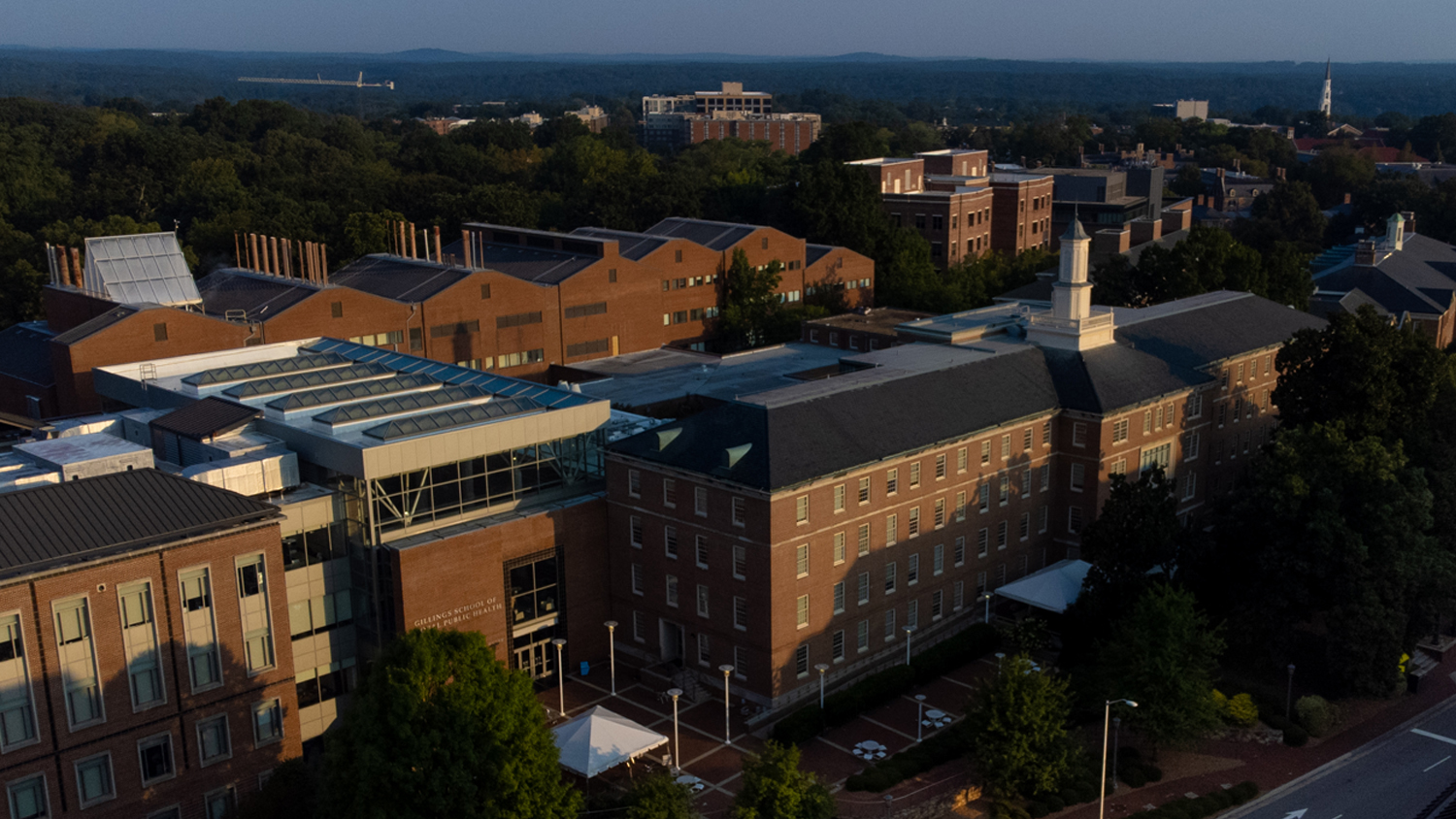“We find monuments erected to heroes who have won wars, but we have none commemorating anyone who prevented a war. The same is true with epidemics. But preventive medicine is coming into its own.” –Milton J. Rosenau, founding dean of the UNC Gillings School of Global Public Health, in a 1936 speech at UNC-Chapel Hill

Nancy Messonnier (2022-present) joins the school during an exciting time of success; it is the number-one public school of public health and second overall. An influential leader in public health at the Centers for Disease Control and Prevention, she has been involved in the development and implementation of a low-cost vaccine to prevent epidemic meningitis in Africa, in responding to the 2001 anthrax attacks, and in creating the COVID-19 vaccine implementation program.
On the morning of February 25, 2020, Nancy Messonnier spoke frankly at a press briefing, warning reporters of a new respiratory virus originating in China and threatening an inevitable spread to the U.S.
“It’s not a question of if this will happen, but when this will happen, and how many people in this country will have severe illnesses,” said Messonnier, then director of the National Center for Immunization and Respiratory Diseases at the Centers for Disease Control (CDC). “Disruptions to everyday life may be severe, but people might want to start thinking about that now.”
The virus is one we all know well: SARS-CoV-2. And Messonnier was trying her hardest to deftly walk the delicate tightrope of U.S. politics and the realities of what a pandemic could mean for the nation. She was doing what numerous other public health practitioners would in her shoes — attempting to prevent a major public health crisis.
Messonnier is now dean of the UNC Gillings School of Global Public Health, which has been working to prevent disease and prolong life for more than 80 years. Today, the school trains the next generation of public health leaders, researchers, and scholars and conducts research on the most challenging health issues of our time, including obesity, access to clean water, health disparities, and infectious diseases like COVID-19.
U.S. News & World Report consistently ranks the Gillings School of Global Public Health as the number-one public school of public health. Most recently, it ranked second overall in the nation — and has been at the top of this list alongside John Hopkins and Harvard since 1987. The school has brought in more than $1 billion in research awards since 2016 and receives more funding from the National Institutes of Health than any other public health school in the U.S.
Researchers at the school were some of the first in the world to address COVID-19, testing potential treatments, creating better and faster tests, assessing mask safety, tracking variants, and developing strategies to address mental health.

Milton J. Rosenau (1936-1946) was the innovator who inspired many and brought the dream of a public health school to reality. He built strong infectious diseases programs, attracted hundreds of international students, and during his leadership, most faculty members served as consultants to developing world agencies.
Their work expands far beyond infectious diseases, though.
They are developing filters to remove toxic chemicals from drinking water, revealing the harmful side effects of e-cigarettes, studying the long-term effects of injury and violence, creating interdisciplinary teams to research and understand obesity, improving access to treatments for opioid use disorder, addressing cancer prevention and control — and so much more. Additionally, school faculty and staff work in all 100 North Carolina counties and more than 45 countries.
But it took decades for Gillings to grow into the global research powerhouse it is today.
Identifying a need
In the United States, the field of public health grew out of the end of the Civil War, which, for many, was a beginning. As soldiers returned home and freed slaves began new lives, smallpox and typhoid swept the region. Meanwhile, tobacco and textile industries expanded, sharecropping increased, and urban areas grew — and so did health problems.
The N.C. legislature created the State Board of Health in 1877 to improve sanitation, prevent disease spread, collect data, and create county health boards. In 1909, it hired its first full-time state health officer, funded a tuberculosis sanitorium, and granted the health board oversight of public water supplies.
But it would take more time for public health issues to be addressed at UNC-Chapel Hill. In the winter of 1918, the onset of an influenza pandemic would eventually kill 50 million people worldwide. Additionally, the poor physical condition of local army recruits began to worry educators and politicians. In response, the university hired its first campus health officer and began discussing the development of a public health training program.
By the 1930s, in the midst of the Great Depression, a public health program at Carolina seemed within reach. Major changes in state government, Franklin Roosevelt’s push for health and wellness programs via his New Deal, and an increased commitment from faculty and staff to tackle the region’s social and economic problems — like Howard Odum of the Institute for Research in Social Science and W. T. Couch of the University of North Carolina Press — pushed the needle forward for a formal school of public health.
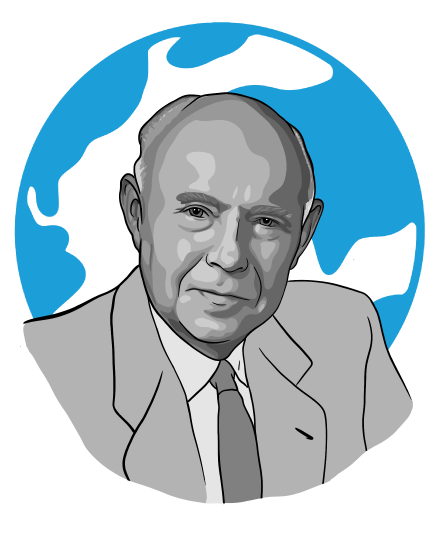
Edward McGavran (1947-1962) built a field station for training students and dramatically developed the school’s laboratory component — which became the Public Health Service’s Venereal Disease Laboratory, one of the best anywhere. Faculty and students were active in North Carolina’s Good Health Campaign to improve the health of North Carolinians.
The true turning point at Carolina occurred in 1935 with Milton J. Rosenau’s resignation from Harvard University, where he helped establish the Harvard and Massachusetts School for Health Officers (the forerunner of the T.H. Chan School of Public Health). N.C. State Health Officer Carl Reynolds insisted that School of Medicine Dean Charles Mangum reach out to Rosenau — whom Reynolds considered to be “the foremost teacher of public health matters in the world” — to find out if he’d be interested in starting a similar school at UNC-Chapel Hill.
To Mangum’s surprise, Rosenau was very interested.
In 1935, Carolina created the Division of Public Health, steered by Rosenau. It would live in the medical school and serve as a regional training center for public health workers. Just three months after Rosenau’s appointment, 51 health officers and sanitary specialists had registered for courses.
Classes in the division kicked off in Fall 1936 and covered topics like public health administration, vital statistics, principles of sanitation, child hygiene, and epidemiology.
“The big course was epidemiology with Dr. Rosenau,” A. Worth Petty, a student in the program, said in a book on the school’s history. “This big book he had written, thicker than the Sears & Roebuck catalog, was the whole story on everything to do with communicable diseases.”
Rosenau presided over one of his classes while dressed up in a black robe and wig as his students staged a mock courtroom trial to demonstrate their knowledge of the social dimensions of disease control.
“It was a remarkable course,” Petty recalled. “We thoroughly enjoyed it.”
While the courses within the division were well-regarded, they only resulted in completion of a certificate — unlike Johns Hopkins and Harvard, which had degree programs. Rosenau believed the division needed to offer advanced degrees to secure its future. A few years after its founding, he asked the administration for bachelor’s, master’s, and doctoral degrees in addition to certificates. He got them — and more: On June 7, 1940, the Division of Public Health became the School of Public Health.
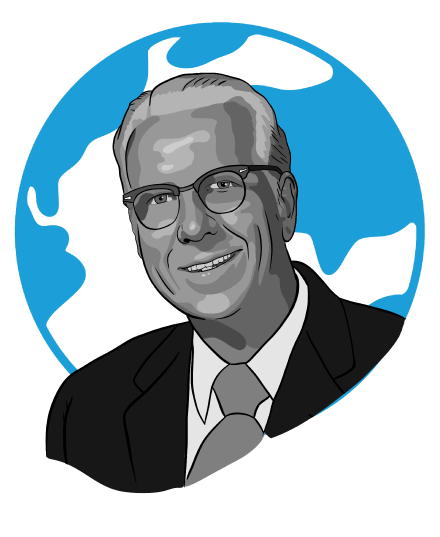
Fred Mayes (1962-1972) led the school during a time of great change. He was the first dean to pay serious attention to recruiting women and minority students and faculty. He hired Bill Small to oversee minority recruitment and dealt with students’ increasing insistence that courses be relevant. The annual Minority Health Conference began during this time.
Becoming a research center
Shortly after the School of Public Health’s founding, Rosenau signed off on the creation of two new departments: public health nursing and health education — a sign that training practitioners was its number-one priority, and research its second. The school’s training program was incredibly successful, so much so it soon expanded beyond Chapel Hill and into Durham. UNC-Chapel Hill professors helped what’s now North Carolina Central University start a health education department, teaching courses and training over 100 health educators and nurses between 1945 and 1960.
In 1946, to the university’s shock and dismay, Rosenau died of a heart attack, and the search for a replacement to fill his giant shoes took more than a year. In April 1947, Edward McGavran, head of the Department of Public Health and Preventive Medicine at the University of Kansas Medical School, became dean. He oversaw the development of numerous departments including biostatistics, mental health, nutrition, field training, and maternal and child health — and growth of the research enterprise.
In the 1940s, the school’s epidemiologists oversaw its first major research project: a study on venereal disease, specifically syphilis — which plagued the United States after World War II — to determine prevalence within North Carolina and develop treatment programs. The study was innovative for its time, using computer technology to collect data, nurse-patient interviews to train public health nurses, and filmstrips as an alternative instruction method for patients.
Funding for research on chronic diseases and their social causes slowly trickled into the school. The Evans County Cardiovascular and Cerebrovascular Epidemiologic Study, for example, focused on a small county in Georgia where the risk of heart disease in Black patients was much lower than white patients. Over the course of the decade, those numbers evened out, with all patients showing similar disease risks. The project produced hundreds of manuscripts and dozens of doctoral dissertations.
By 1962, the School of Public Health had a budget of nearly $2 million, and many of its departments began to dig their tar heels into research. In the coming decades, money poured in as President Lyndon B. Johnson provided millions of dollars for public health research and training through his “Great Society” programs, like Medicare and Medicaid.

Bernard Greenberg (1972-1982), beloved and renowned founding chair of the biostatistics department, took the school to new heights, increasing federal funding dramatically and leading the school and the world into the modern era of clinical trials. He raised academic standards, reached out across the university, and achieved the first step on the path to the much-needed new public health building by obtaining support to plan it.
The school’s nutritionists worked on an evaluation of the Special Supplemental Food Program for Women, Infants, and Children (WIC). They showed that it was one of the most important and successful food assistance programs in the nation — and often engaged in political battles in Washington, D.C. to keep it active. Carolina faculty continue to advocate for and study WIC today.
The biostatisticians became pioneers for multicenter trials and oversaw the Southeastern Cooperative Cancer Chemotherapy Study Group to investigate the effectiveness of chemotherapy agents. In 1959, Dean Bernard Greenberg wrote a first-of-its-kind article on the design and conduct of collaborative clinical trials for American Statistician and, in 1967, chaired a National Heart Institute committee to develop procedures for conducting large, multicenter clinical trials.
As the environmental, women’s, and civil rights movements picked up speed in the ’70s, the School of Public Health tried to keep pace. Daniel Okun and his students researched the water supply in Chapel Hill, which ultimately led to the creation of Cane Creek Reservoir — saving the city from dependence on Jordan Lake, which had often suffered from the area’s severe droughts. This ignited Carolina’s focus on bringing clean water to communities both locally and globally, creating the foundation for what would eventually become The Water Institute in 2010.
Around the same time, hardier federal health and safety standards led to a Carolina study on respiratory illness associated with the chemical process in the manufacturing industry and environmental problems in the workplace. This work established a system to monitor employee health and evaluate health risks of new manufacturing processes.
The maternal and child health researchers focused on concerns like day care, delayed child-bearing, and teenage pregnancies. They led landmark studies in family planning, suggesting that family planning services not only reduced unwanted pregnancies but improved birthweights, infant mortality, and the overall health of women. Others focused on infectious diseases among children like polio and other debilitating illnesses.
In 1977, students from across the school created the Minority Health Conference to highlight health issues important to people of color. Today, the nationally recognized conference brings together students, academics, and community members to raise awareness about health disparities.
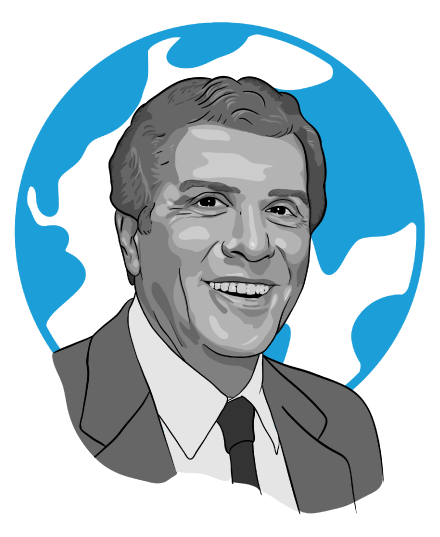
Michel Ibrahim (1982-1997), already an outstanding school faculty member, became dean in 1982 and accomplished what had seemed impossible: securing a new building, after years of overcrowding. He launched the school’s first strategic planning process, commissioned Robert Korstad’s history of the school’s first 50 years, promoted research collaborations across departments and schools, and supported school-wide initiatives on minority health research.
Numerous centers and institutes were also spun out of the School of Public Health at this transformational time. In 1966, its researchers founded the Carolina Population Center — now the largest, most well-funded center on campus — to study population problems like food insecurity, water scarcity, and family planning locally and in developing countries. One year later, they created the Cecil G. Sheps Center for Health Services Research to explore and evaluate health services for people from all kinds of communities.
Two CDC-backed Prevention Research Centers joined the growing list in the School of Public Health in the ’80s: the Center for Health Promotion and Disease Prevention (HPDP) and the Injury Prevention Research Center (IPRC). HPDP works directly with communities to reduce health disparities, while IPRC addresses vital societal issues like domestic abuse, car crashes, traumatic brain injury, home and workplace safety, and opioid overdose.
By 1980, the school had one of the best public health programs in the nation, with more than 700 students enrolled, over 300 faculty members, and an operating budget of $20 million.
“The scope of both basic and applied research conducted by faculty and staff during the 1980s would have startled yet pleased the school’s pioneers,” writes Robert Rodgers Korstad in “Dreaming of a Time,” a book covering the school’s history through 1989. “From laboratory research aimed at developing a vaccine for syphilis to field studies seeking to reduce smoking among teenagers, the school’s research efforts covered virtually every serious health problem.”
Evolving into a global powerhouse
While the School of Public Health has deep roots in North Carolina, its reach has always extended well beyond those borders. Decreased enrollment during World War II opened doors for international students, hundreds of whom would take classes and receive degrees from the school over the next two decades. Edward McGavran, who became dean in 1947 after Rosenau’s untimely death, strived to make foreign students feel welcome. He set up English classes for those who needed them, hosted social events, and organized field trips all over the state.
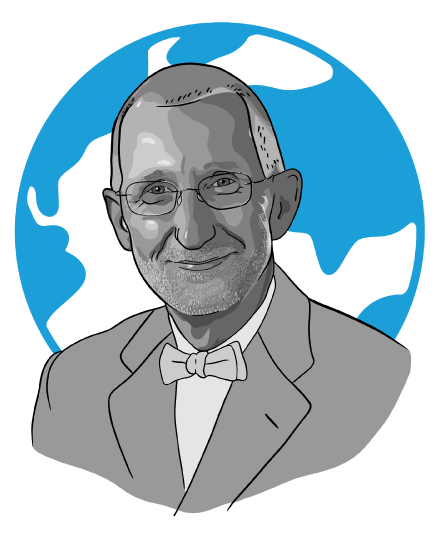
William Roper (1997-2004) recommitted the school to practice and to North Carolina, strengthening its role in the policy arena. He brought outstanding people from diverse sectors onto advisory boards and led the school through the crisis period after September 11, 2001. He went on to become dean of the UNC School of Medicine, CEO of UNC Health, and interim president of the UNC System.
By the 1960s, faculty and staff trained health workers for duty in foreign countries, developed a nondegree training program for graduate-level sanitary engineers from developing nations, and collaborated with the medical schools at both UNC and Duke to develop a Peace Corps doctor training program. Additionally, the epidemiology department founded the Malawi Public Health Program to train Peace Corps volunteers in the prevention and cure of tuberculosis.
The school’s health educators were going global, too. In the 1970s, John Hatch and a team of consultants from the school worked with health officials from the Republic of Cameroon in western Africa to improve understanding of health issues and develop effective communication efforts for sharing that knowledge across the country.
Around that same time, the Lipid Research Clinics Program — a centerpiece of the biostatistics department — measured blood fat levels in subjects across the U.S., Canada, Israel, and the Soviet Union to uncover if lowering cholesterol could reduce the risk of heart attacks and strokes.
But it wasn’t until 2007, when the school received a $50 million gift from Dennis and Joan Gillings, that the school proudly announced its role in global affairs and became the Gillings School of Global Public Health.
“The school has always been a global powerhouse, but underrated in that sense,” says Barbara Rimer, who served as dean from 2005 to 2022. “It’s always been seen as one of the top schools of public health, but less of a global force than our peers at Hopkins and Harvard. Part of what we wanted to do in the renaming was attach the world ‘global’ to really make a statement to the world that we are a global school of public health. And that doesn’t mean we’re any less North Carolina. It just means we’re North Carolina and the world.”
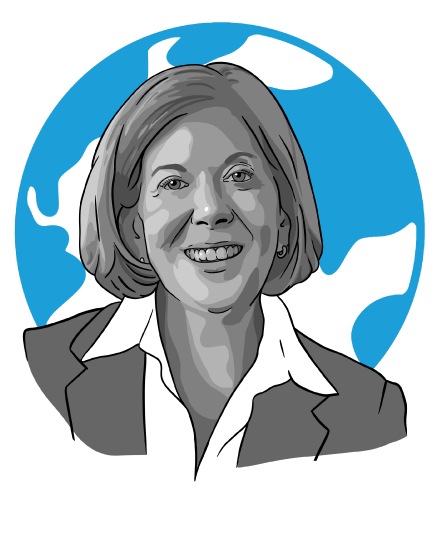
Barbara K. Rimer (2005-2022) is not only the school’s first female dean, but it’s longest serving. Her commitment to innovative research, academics and practice, inclusive excellence, and service to North Carolina and beyond have guided her leadership priorities, aligning with the school’s mission to improve public health, promote individual well-being and eliminate health inequities across the state and around the world.
Today, the UNC Gillings School of Global Public Health continues to train the next generation of public health practitioners and tackle the world’s greatest challenges across eight departments. Its researchers work in 45 different countries and have touched every public health crisis in the last 40 years, many of which are global.
In collaboration with the UNC Institute for Global Health and Infectious Diseases, Gillings researchers study a slew of diseases — from HIV to Ebola to cervical cancer — in China, Liberia, Malawi, Nicaragua, Vietnam, and Zambia. Others are addressing topics like obesity, health disparities, aging, and safe drinking water in the Galapagos Islands and across South America, Europe, and Asia.
“We want to solve the biggest health problems in the world,” says Rimer.
To do that successfully, she adds, requires bold researchers willing to step beyond their comfort zones.
“Courageous people not only advance science — but they advance communities,” she says. “And the School of Public Health is a fulcrum for advancing some of the most important issues and causes in society at large.”


